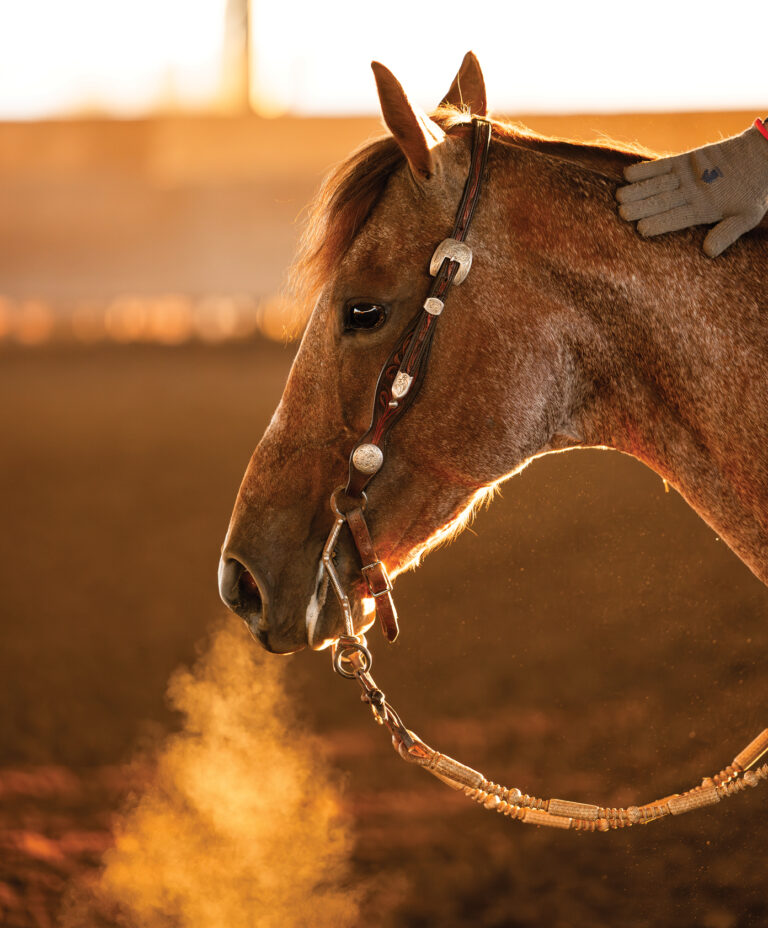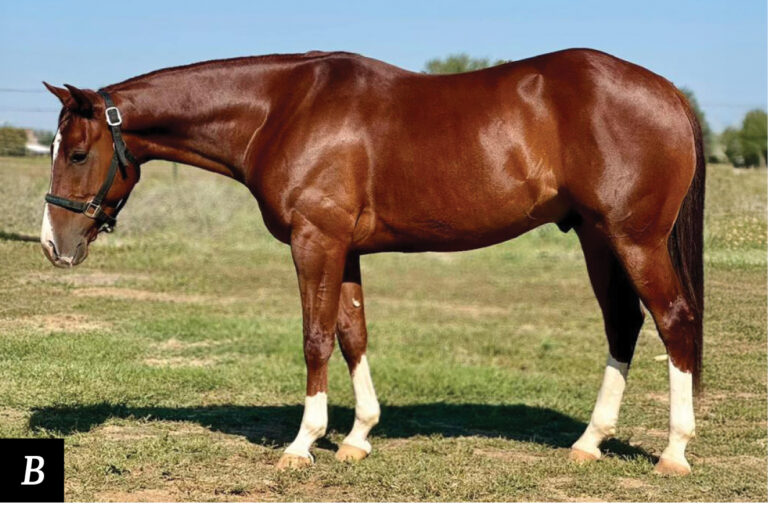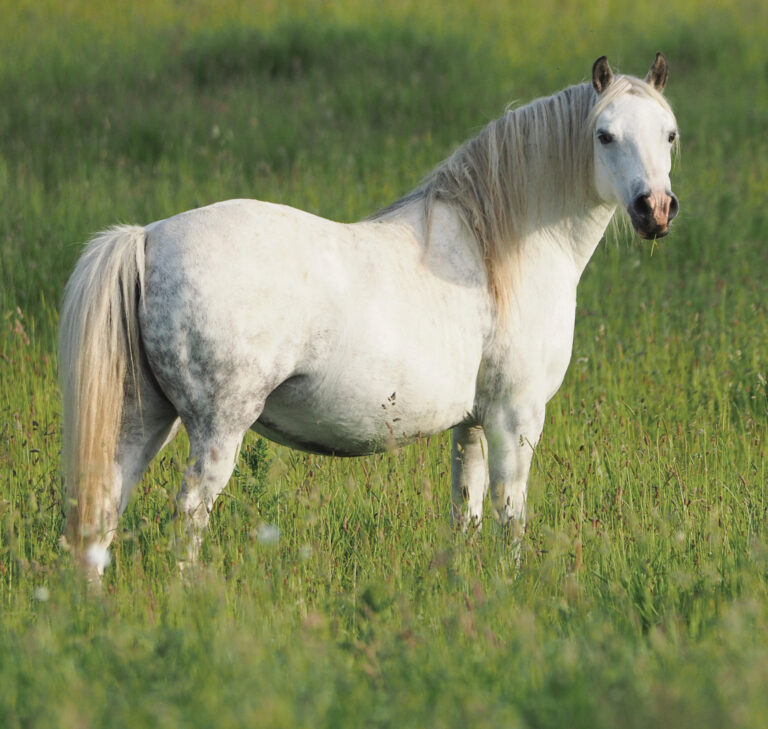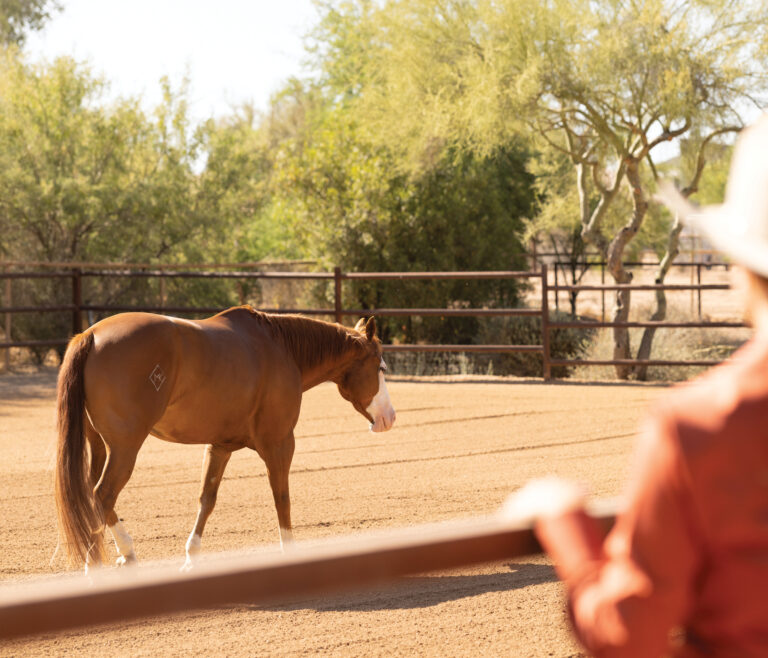Would you like to improve your relationship with your horse? Understanding a bit about how horses respond to human interaction and different training methods can improve our relationships with them and strengthen the likelihood that they’ll perform behaviors that we’ve requested of them. It’s possible, too, that if we smile while we’re working with them, they’ll respond even more favorably.
If that sounds far-fetched, we’ll back it up with a study that indicates that horses can indeed recognize human facial expressions and that they prefer a smile to a scowl. First, though, we’ll look at negative reinforcement and positive reinforcement training methods, and how you can use both in formulating the best course for your horse’s training.
Negative Reinforcement
Negative reinforcement is a training method that can help teach a horse (or other type of animal or even a human) specific behaviors. It’s traditional and widespread in the horse world. With the use of the word “negative,” this method of training can conjure up misleading imagery of punishment or cruelty. In this case, “negative” simply refers to the removal, or negating, of something unpleasant or uncomfortable when a horse responds to a stimulus or cue the way we would like him to. With repetition, he learns that if he responds as we would like, the unpleasant condition will stop.
A simple example of negative reinforcement that we’re all familiar with is a rider using leg pressure to ask a horse to walk forward. In its earliest application on an untrained horse, the squeezing of the horse’s sides may need to be quite overt. When the horse steps forward, the rider should immediately stop applying leg pressure. The removal of that pressure is the horse’s reward for doing as the rider wants. Over time, he’ll learn that the quicker he moves in response to leg pressure, the sooner the pressure stops.
Not Just in the Saddle
Negative reinforcement is a method that has applications beyond riding. A stable hand may use it to shoo a horse from a stall to be cleaned. At first it may require a loud, unpleasant voice and large, active movements with hands and feet to get a horse to step out of his stall. The horse finds that as soon as he exits, the noise and commotion stop. Over time, and usually very quickly, horses begin to respond with the desired behavior at just one spoken word or a recognizable motion of a hand.
For negative reinforcement to work best, the unpleasant or uncomfortable phenomenon must stop immediately upon the horse doing as requested. If not, the message becomes muddied, leaving the horse to question whether there’s a true connection between his response and the negating of the unpleasant condition.

Positive Reinforcement
Positive reinforcement is an alternative method of training animals, including horses, that involves the rewarding of desired behavior with a treat. That treat may be a tasty bite to eat, a pleasant rub or touch, or even a sound. As the horse’s behavior results in a pleasurable outcome for him, he’s likely to repeat the behavior.
As negative reinforcement involves removing a stimulus, such as a rider’s leg pressure when the horse does as asked, positive reinforcement involves the adding of a reinforcing stimulus, such as an edible treat. Positive reinforcement is often used at wild animal parks and zoos to train animals to accept a certain degree of interaction with humans, such as an elephant receiving a treat for lifting a foot for veterinary care.
With horses, the concept of positive reinforcement isn’t as mainstream as negative reinforcement, but it has been used for centuries to produce results and has made a strong impact in recent years as horse people have been investigating alternatives to the standard of negative reinforcement.
Examples
One of the simplest and most familiar examples of positive reinforcement training is teaching a horse to come to you by rewarding him with a treat. By providing that treat to a horse that comes to you and allows himself to be haltered, you’re training him that good things await him and increasing the likelihood that he’ll come to you again, which can be an enormous advantage when catching a horse on pasture.
Positive reinforcement can be used in other situations, such as training a horse to stand quietly next to a mounting block. With patience, a rider can physically position the horse alongside a mounting block, and as soon as he stands on all four feet next to it, a treat is immediately given. Timing is critical so that the horse learns to connect what he’s doing (standing quietly in place at the mounting block) with the treat.
Try Clicker Training
Clicker training is a positive reinforcement method using an audible signal that predicts a treat. Many people associate clicker training with dogs, but it works well with horses, too. Edible treats are given in unison with the clicking sound of a handheld device designed for the purpose, and the horse learns to associate the clicking sound with the treat. By making the clicking sound as soon as the horse does as you ask, it provides an immediate reward and gives you more time to provide the edible treat.
Gradually, you’ll be able to give the edible treat less frequently because the clicking sound itself becomes rewarding. The click is easier and more immediate than an edible treat and makes rewarding a ridden horse by a mounted rider much more practical.
Clicker training, representing positive reinforcement, has shown that horses can become truly eager to perform requested behaviors in order to receive their treats. In some cases, they will perform tasks without being asked, hoping for their treats. Clicker training can be used in teaching a horse to perform a wanted behavior, but also can be successful in teaching a horse to stop an unwanted behavior. Getting rid of undesirable behaviors with clicks instead of punishment is advantageous for human and horse.
With no force involved in positive reinforcement training, it’s a particularly satisfying method of achieving desired behaviors, with your horse choosing to and often eager to take part.
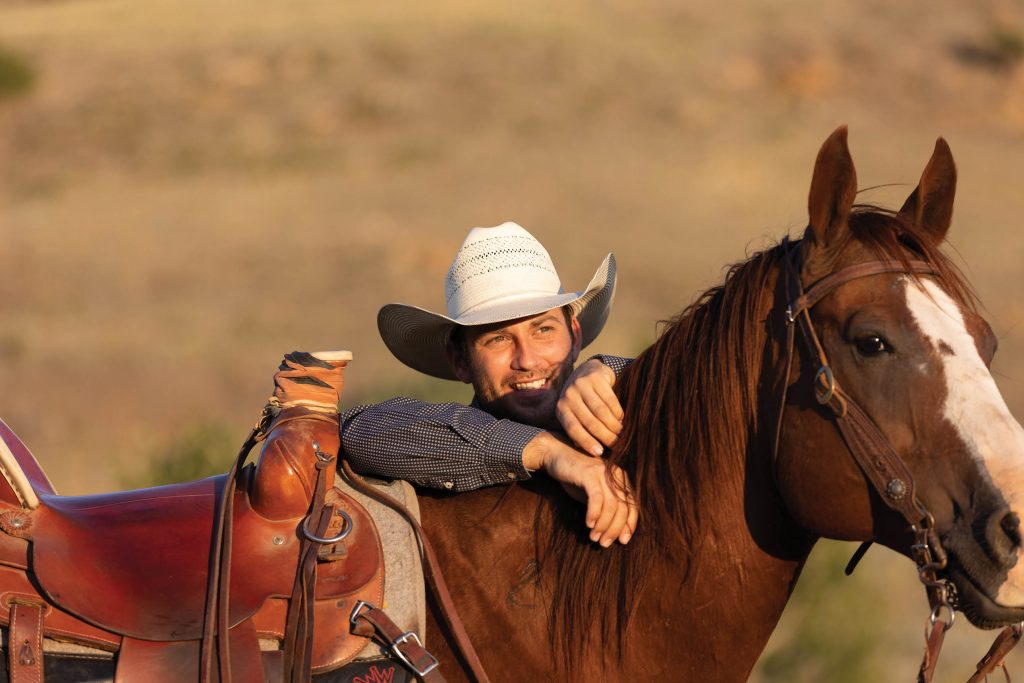
Smiling May Help
What if smiling as you work with your horse could help put him at ease and make him more receptive to his training? A study (Proops et al., Animals Remember Previous Facial Expressions that Specific Humans Have Exhibited, Current Biology, 2018) conducted at the University of Sussex in the United Kingdom presents some interesting findings that could be applicable to training and working with horses.
As noted in the study’s summary, facial expressions are important social signals among humans, and a wide range of animal species are also capable of discriminating the emotions of humans through facial expressions. For the animal, remembering emotional experiences with specific humans could have clear benefits for social bonding and aggression avoidance when encountering these humans again.
In controlled experiments, domestic horses were presented with a photograph of an angry or happy human face and several hours later saw the actual person in a neutral state. Short-term exposure to the facial expression was enough to generate clear differences in subsequent responses to that person, consistent with the past angry expression having been perceived negatively and the happy expression perceived positively.
It’s in the Eyes
The horses’ looking behaviors (lateralized: looking with one eye; and binocular: looking with both eyes), displacement and stress behaviors, approach, avoidance, and heart rate measures were recorded to evaluate responses to the person with the neutral expression and gain information on the horses’ emotional state. Lateralized responses help us know what horses are experiencing. In many species, including horses, negative and potentially threatening stimuli tend to be preferentially processed in the right hemisphere, indicated by a left gaze bias, and more pro-social stimuli in the left hemisphere, indicated by a right gaze bias, and lateralized responses to human facial expressions have been observed in horses.
In the study, there was a significant difference in first gaze biases. The horses that had viewed the frowning photograph showing an initial left gaze (response to a potential threat) bias and those that had seen the smiling photograph showing no gaze bias. Further, horses originally shown the frowning photo spent significantly more time overall looking at the real person with their left eye than did horses shown the smiling photo. The opposite is true when assessing right gaze bias time. Horses previously shown the smiling photo spent more time viewing the real person with their right eye than did horses shown the angry photo.
Displacement Behavior
Displacement behaviors are actions that appear unrelated to the current situation. These include scratching, and are thought to be a coping mechanism in stressful situations. These behaviors can also provide insights into how animals are perceiving emotional expressions. Horses in the experimental group that had been shown the angry photo spent more time engaging in displacement behaviors (scratching, floor sniffing, and performing a behavior termed ‘‘lick and chew’’) when viewing the live neutral person than did those that had been shown the happy photo.
The results provide evidence that some horses can perceive the emotional cues that humans show on our faces. They use their memory of these to guide their future interactions with us. As you work with your horse, consider whether the standard of negative reinforcement is your best approach. Understanding and using positive reinforcement may provide greater rewards for you and your horse. Also remember that studies have shown that animals can recognize our faces and horses may respond more favorably to a smile.

